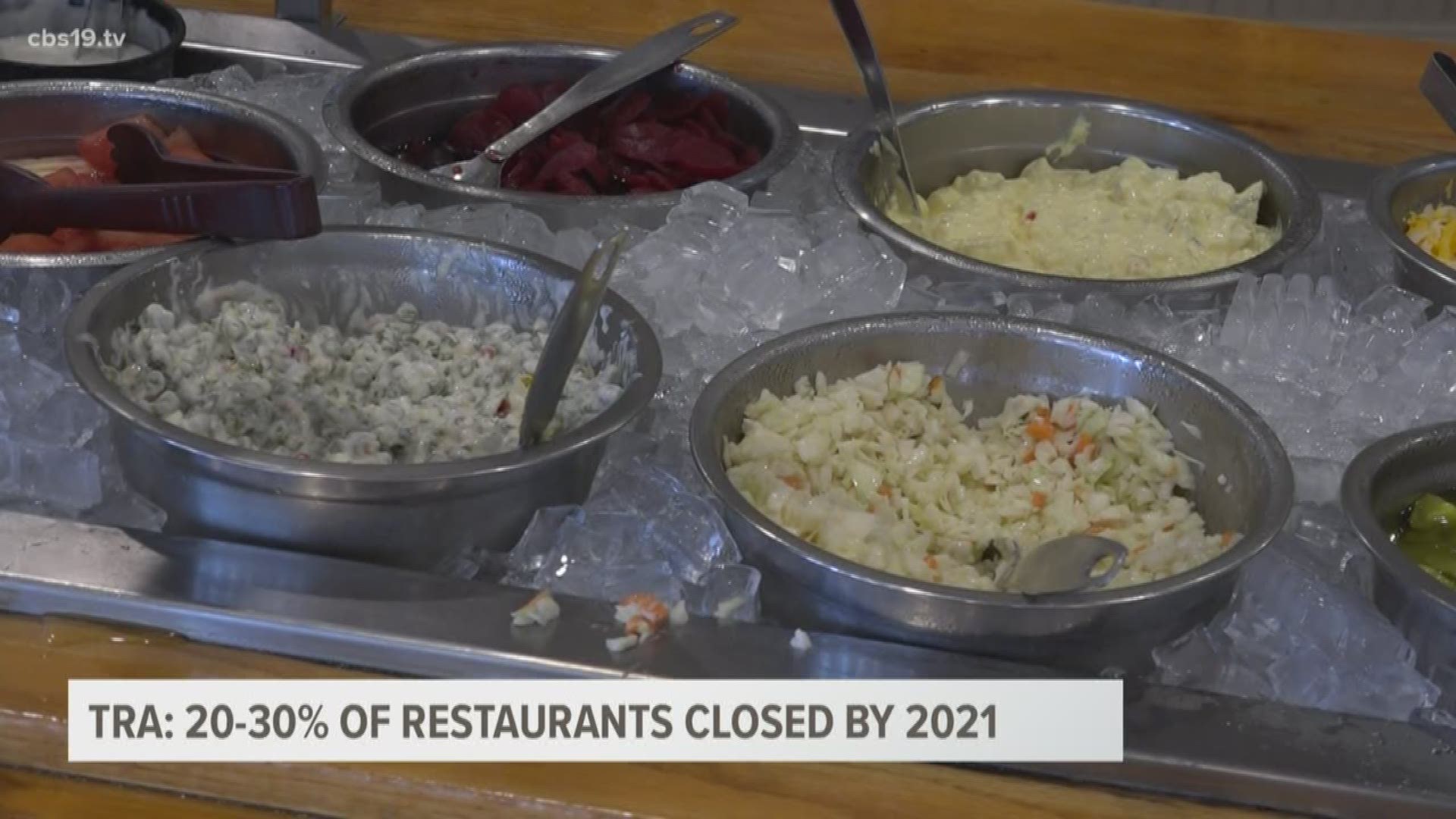TYLER, Texas — The weekend is prime time to go out and eat at a good restaurant. However, with every passing day, dozens of restaurants around East Texas get closer to shutting down.
“We think by the end of the year, we’re probably looking at a 20-30% reduction in restaurants, which is huge,” Melissa Stewart said. “We are a tremendous employer, we are small business, we are entrepreneurial dreams. And that is a devastating number.”
Empty tables are common now at restaurants across East Texas, and not merely because Governor Greg Abbott mandated restaurants only open to 50% of capacity. Stewart, the executive director of the southeast region for the Texas Restaurant Association (TRA), says there may soon be more empty buildings where restaurants used to be.
Stewart says the damage to the restaurant industry is the same in cities big and small across Texas, but certain types of restaurants are more vulnerable than others.
“We know the buffets, right? I mean, my favorite,” she said. “Easy peasy. Those are not doing well. We’ve got a workaround for buffets, but it depends on how you were set up. Some of our Golden Corrals are set up where you kind of have a work line behind it, so you can have somebody doing serving if that makes sense for that location.
“We have other buffets—and I’m thinking sort of specifically the Chinese buffets—where they’re sort of two rows and there’s no real way to have an employee do the serving as easily, so those have had a real hard time.”
Price point is not a determining factor in a restaurant’s viability during the coronavirus pandemic. “I’ll tell you, the other one is our high-end, celebration restaurants,” she said. “It’s really hard to do a takeout, fancy-fancy dinner. You know, if bananas foster, flamed at the table, is your thing, you’re not going to be able to put that in somebody’s back seat.”
Restaurants had been allowed to open to 75% of capacity until Gov. Abbott increased restrictions in July following a surge in COVID-19 cases in Texas. Stewart says there is not much difference between 75% and 50% because social distancing requirements meant tables had to remain six feet apart. She adds that most restaurants do not even see 50% of capacity.
But while they are not earning their full revenue, they still have to pay their full expenses or more, given the additional cost of personal protective equipment. Without a quick infusion of cash, many restaurants will have to close.
“Most immediately, we need more cash in restaurateurs’ hands,” she said. “We need it, one way or another.
“The Paycheck Protection Program was great, and it came through really quickly, but the problem was, it was for this much of a—we thought the problem was going to last this long,” she said with her hands close together. “It’s lasting this long,” she added, stretching her hands farther apart.
She says there is a need for protection from eviction or foreclosure for restaurants that are unable to make their entire rent or mortgage payments.
The TRA says restaurants employee approximately 1,300,000 Texans and generate combined revenues of $70 billion each year. She says allowing restaurants to fail would have broad effects on the entire economy.
“Think,” she said, “about everything that goes into your Combo #3. Right? So, you’ve got the meat producers, you’ve got the vegetables, you’ve got the farmers. If you had a cocktail with it, you have all the parts that went into that. You have the landlords that hold the leases on the restaurant space. The employees. The linen company that does the tablecloths. I mean, we touch so many people that this contraction is really gonna hurt, and it’s gonna hurt across a lot of sectors.”
Stewart urged diners who order takeout to pick up the food themselves, rather than use a third-party delivery service because of the additional fees restaurants have to pay them.
While liquidity is an immediate need, Stewart says the TRA is lobbying for a restaurant relief bill in Congress and pushing state regulators and municipalities to reduce regulations and allow restaurants to be more creative.
“Maybe expanding out into the parking lot so we can socially distance a little bit better,” she said.
Because a happy table in the parking lot is better than an empty one inside.

